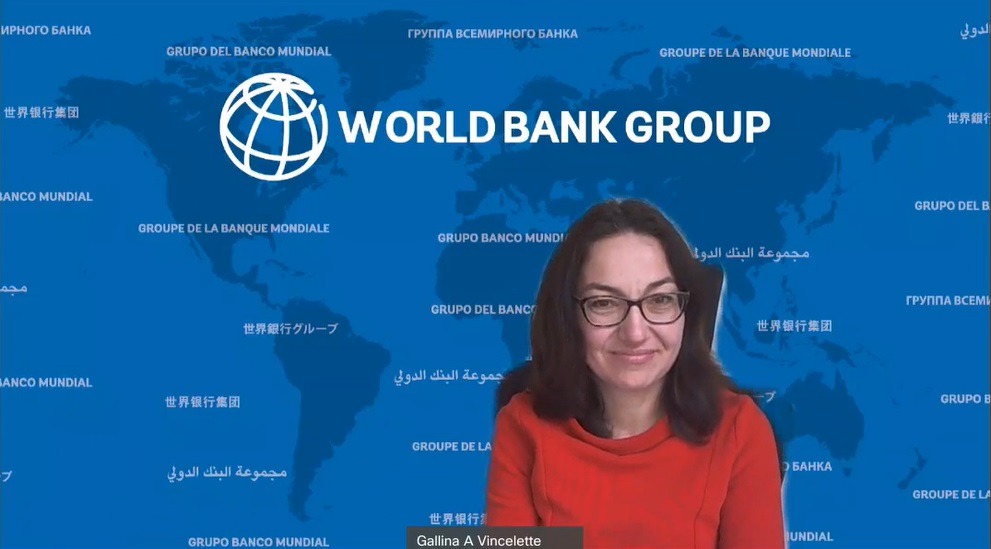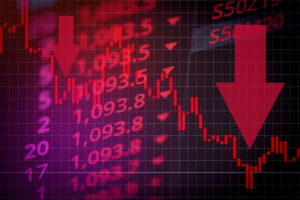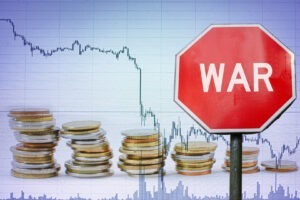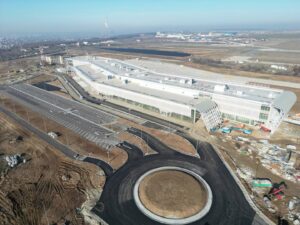Romania’s economy will grow by 7% this year, and the economy will fully recover after only one year of the pandemic, but there are a number of risks that threaten this forecast, such as insufficient absorption of European funds, rising inflation and, especially, vaccine hesitancy, said, in an interview for Economedia, Gallina A. Vincelette, World Bank’s Country Director for the European Union (EU).
Urmărește mai jos producțiile video ale Economedia:
- articolul continuă mai jos -
Most important remarks:
- The pandemic has triggered the sharpest recession since the World War II in Europe.
- The pandemic was felt in Romania on many fronts, including investment, productivity, and eventually potential growth also may be affected.
- While the economy contracted by close to 4% last year, sectors like the IT sector have thrived during the pandemic.
- Our estimate is that additional 800.000 people have fallen into this category of at risk of poverty.
- A year from the start of the crisis, 7% of families report scaling down their food consumption in order to cope with the crisis.
- Romanian firms have become more pessimistic in the time of the pandemic than before. While in previous years they would expect sales to grow by say 7 or 8% on average in the future, between the two waves of the pandemic their perceptions of growth are of no more than 2%.
- 90% of Romanian firms today use digital technology. Impressively, more than 50% increased the use of digital technology during the pandemic.
- Our forecast this year for Romania is that the country will reach about 7% in 2021 growth rates.
- Romania is one of the very few countries in Europe that actually will fully recover its economy just after one year of the pandemic.
- There is a great opportunity for the country to really utilize its potential growth of 4,5%, even exceed that, should the utilization of very significant amount of European funds is done in a good way.
- Another thing to watch that can threaten the recovery is rising inflation.
- The third and what I might be probably the most important factor that could threaten the recovery is vaccine hesitancy. It’s one of the lower uptake in vaccinations in Europe and we see that almost 50% of the Romanian population is skeptical about getting vaccinated. This really can threaten the economic recovery.
- To have a successful recovery, the country will have to overcome its fiscal deficit. A large part of this deficit has a structural component. And this structural component links to reforms that can be undertaken to address this structural pressures. And some of these reforms very much relate to the pensions side, public wages, improvements in efficiency of the tax administration, closing tax loopholes.
Watch FULL VIDEO INTERVIEW with Gallina A. Vincelette, World Bank’s Country Director for the European Union (EU):
Montage: Ovidiu Micsik / Inquam Photos
Rep.: The past year and a half has been difficult for governments and companies. I would like to ask you what is the economic impact of the pandemic in the European Union and, more precisely, in Romania.
Gallina A. Vincelette: We are almost two years in the Covid-19 pandemic and this is the fourth wave. What is very important is to understand what has happened in these two years and also to learn from this experience. This is exactly what we have done in our Regular Economic Report, which this time is entitled „Inclusive Growth at a Crossroads”. What we do is we take stock of the latest developments, as long as we give perspective of the near-term outlook for the countries in the European Union.
And what we have seen is that the pandemic has triggered the sharpest recession since the World War II in Europe. What it means is that the economy of the European Union has contracted by over 6% in 2020, in fact 6,1% last year. And the more important part is that its impact last year was not only very deep with this large recession, but it’s been also uneven, both across countries and within countries. This impact is likely to reverse several years of very good progress of convergence of incomes. Our estimates show that perhaps somewhere around 3 to 5 million people in the EU today at risk of poverty and this is precisely a direct effect of the reduced incomes that we see.
Romania is not an exception in this context and the pandemic was felt in Romania on many fronts, including investment, productivity, and eventually potential growth also may be affected. The Romanian economy contracted 3,9% in 2020, which is, if you think about it compared to 6,1% overall for the European Union, less severe. And maybe you wonder why it’s the case. But what we see is that the Romanian economy, structurally, is quite different than some of the countries that were most affected in the pandemic because of its lower dependence of trade and tourism. So this was, in some way, saving the economy from the sharp contraction. Also the smaller recession that we saw last year can also be attributed to the government effort to keep some economic sectors open during especially the second wave of the pandemic.
What is interesting in Romania is that, while the economy contracted by close to 4% last year, sectors like the IT sector have thrived during the pandemic. The information and communication sector, looking at the statistics, we see that it has expanded by 10% in real terms. This is the fastest growing sector of the economy.
Unfortunately, there is not only good news when you have recessions and when you have pandemics and large shocks in economic activity. What is very important to understand here is the impact of the shock on the factors of production. What I mean by that is knowing what are the effects on sectors such as education, which then links with human capital and potential. It’s something that we are very much looking into and we being concerned about in Romania, but also in Europe and the rest of the world.
In Romania in particular we see that in the last school year, Romanian children of school age have lost 110 days of the school year. This is practically half a school year not in attendance.
Today Romania is fully reopening its schools and it’s eager to support its children in this learning recovery, regaining back contact with peers, socio-economic skills, reducing anxiety, increasing digital skills. But what is important is that this reopening will have to be done in a very safe manner. So we want to see safer learning spaces and to achieve those that would require high percentage of teachers, of personnel, of students vaccinated against the Covid-19. And we very strongly believe that the education sector needs a lot of attention from this perspective, from all stakeholders – the government, the private sector, international partners like the World Bank – to support this recovery, so eventually the cost on the human capital that I was talking just about a minute ago is not large and the country can bounce back and recover successfully.
Romania had already had one the highest shares of people at risk of poverty before the pandemic. The World Bank has mentioned in one of the reports earlier this year that the number of people at risk of poverty has increased at the beginning of the pandemic. What do you think are the causes of that situation and what do you see happening now?
If we step back a little bit, addressing social inequalities and poverty are a very important focus of our work in Romania, but also globally. Unfortunately, we have seen throughout the world, including in Romania, that the worsening labour market outcomes triggered by the pandemic had in fact translated into declining household incomes. And this is in the core of increasing poverty, especially for households around the poverty line, that would immediately mean that more people are at risk of poverty. Our estimate is that additional 800.000 people have fallen into this category of at risk of poverty. So the pandemic is one source of this rise in at risk of poverty numbers.
The second cause is the poor agricultural year that we saw in 2020, which has also contributed to a reduction in incomes.
We also remain vigilant about food security. Rising food prices especially affected people around that poverty and below the poverty line, because heavy parts of their incomes are attributed to the food consumption. Rising food prices is something that we really need to watch. For example, we see, a year from the start of the crisis, 7% of families report scaling down their food consumption in order to cope with the crisis. And that is exacerbated again by the rising food crisis.
At the beginning of the crisis, we saw about a third of household reporting a substantial income drop. This is what, again, brings people down in their income levels and into risk of falling into poverty.
The good news here is that a year later our latest estimates actually show 15% of people with falling incomes, which is a significantly milder income drop that just a year ago – from 31 to 15. So this recovery that we see this year is helping restore some of this lost income and hopefully will support again income growth and overall economic growth for Romania.
Because you have mentioned earlier the labour market, Romania had a special situation in the past and a half year, because a lot of Romanian citizens returned to the country. Has that impacted in a certain way the labour market and maybe the poverty rate?
This is a question that needs to be looked at from several dimensions.
From the demand side of the market, when you have a contraction in economy, especially in some sectors, the demand for labour will be reducing. Subsequently, you will see that you have a decrease in income for those categories of work. We see that in the beginning of the pandemic – our measurements were around February last year – about 18% of Romanians were unable to do their jobs because of the pandemic measures, because they were affected somehow by the closures of sectors or containment measures that were put in place. And further 17% saw reductions in working hours. So this does impact income per se as well as the labour market.
But as the subsequent waves of the pandemic came around and measures were loosened, you see in the statistic reports that fewer workers now report that they were unable to do their jobs – 6%, compared to 18% a year ago – and another 6% also say that they have experienced reduced hours, compared to 17%.
So whether these fluctuations in labour markets are caused by the influx of returning Romanians to the labour market in Romania or they’re purely attributed to the containment measures is very difficult to distinguish.
But we do see pressures on the labour market and it’s a combination of many factors, including and probably primarily the containment measures.
What is interesting again is that while some sectors have less demand for labour, others have quite a lot demand for labour. We have spoken about the IT sector that is actually grown quite rapidly. So depending on the skill composition and the skill mix of returning Romanians to the country, that can also be a valve through which this extra demand for labour in particular sectors – should their skills match – was satisfied.
I would like to talk right now about the business environment in Romania. Do you think the companies in Romania have been resilient during the pandemic and did the public policies help this resilience?
We started with the bigger picture of the contraction of the economy, we saw how it affects income levels at the household level, we also talked about the labour market.
An integral part of this is the behavior of firms, of how did firms adapt to this very severe pandemic shock that we see.
Firms in Romania, like those throughout the European Union, but also globally, have been affected by the pandemic. It’s inevitable. The economic agents are a part of overall economic activity, they are drivers of this activity.
What we see again in the first part of the pandemic, the first couple of waves, we see a very drastic drop of sales. Sales dropped about a third between May and July 2020, relative to their levels just a year before. In September, as you saw picking up with economic activities, sales somewhat recovered, but not quite. Between September and October, last fall, we see that sales were still over 20% lower than seasonally thinking about the year before.
Part of this – and it shall be seen in our report – is the support that was provided by the authorities to make sure that viable firms stay alive, that the shock does not affect the vulnerable households in very adverse ways. So public support has played a role here and it’s been very important and, going forward, it will continue to play a role. But what is key in providing public support is targeting and making sure that public support reaches whether its most vulnerable households, whether its firms that have hurt the most from this crisis.
And what we see now in the report is that smaller and younger firms were hit the hardest in this pandemic.
We run different surveys of firms to learn about their perceptions, about their performance. And one interesting aspect that we have looked at is the assessment of firms with respect to their perceptions of the future, with respect to uncertainty. What we have seen during the pandemic is unprecedented magnitude of uncertainty. So firms don’t know what the future holds.
Romanian firms, for example, have become more pessimistic in the time of the pandemic than before. And while in previous years they would expect sales to grow by say 7 or 8% on average in the future, this perceptions have really been lowered. And their perceptions of growth are of no more than 2% between the two waves of the pandemic. So this gives you the sentiment and confidence that they have in the recovery in the years to come.
There is an interesting silver lining to that and this is the digital adoption. If there’s anything that this crisis has shown it is the adaptability of firms to these new conditions. And digital adoption has been one of the most remarkable tools that firms have used to adapt to this new reality. So the pandemic has significantly increased the adoption or expansion of digital technologies. We see that 90% of Romanian firms today use digital technology. Impressively, more than 50% increased the use of digital technology during the pandemic. So this is a real silver lining and it’s something that just shows you how adaptable and how flexible firms are to innovate and to adapt to very difficult conditions.
If I can go and link this back to the early point that I made about productivity – and how important is the recovery period to make sure that the factors of production, human capital, technology, physical capital, are used in ways that can increase productivity so that potential growth can expand –, here with digital adoption what is very important it’s that it does not stay at this level, but it sticks. What does it mean to stick? It means that once you have this very rapid adoption of digital technology, you want to make sure that this is complemented by investment in digital solutions, that there is good supply chain management there, so that you can multiply the adoption of this technology so you hopefully increase productivity, potential growth and the size of the economy as a whole. There is hope in this, it’s a silver lining of this crisis.
Do you think that the adoption of digital solutions has managed to keep companies afloat during this pandemic, to help them survive?
In some ways, this has been a real important factor of survival, because it is adaptation. Once you don’t have the face to face interactions in shops and in deliveries, in offices, digital technology has been a breach. And this is something that I think is an opportunity for Romania. Another very interesting work that the World Bank has done addressing the Digital Dilemma of Europe is a flagship report entitled „Europe 4.0”. And there we really look at technology and what are the opportunities that this technology brings with respect to competitiveness, global competitiveness, but also inclusion, as well as geographical cohesion. And we see that Romania in particular has great potential to reap benefits from the creation of new transactional technologies. Transactional technologies are these platforms that match suppliers and consumers and they help basically facilitate that link of bringing buyers and sellers in a digital way.
So, to go back to your question, yes, digital technology – if especially companies have adopted this type of transactional technologies – has been powerful to keep companies afloat, because that’s a whole new venue through which they can do their sales.
If I can add here, these transactional technologies for Romania can be exploited in dual ways. One is enforce market inclusion. And two is to overcome geographical disparities, so it has geographical convergence. Because there is no distance when you’re on a platform between buyers and sellers, this can be a really powerful tool precisely to enhance market inclusion, especially of small, of young firms, but also to foster convergence of Romania in catching up regions.
Again, the opportunities are great and you see that today about 30-31% of the population of Romania has basic and above basic digital skills. But if we can boost, if we can support the development of these skills, cap off with investments that I just spoke about in compliment with technology, then you really have a very important mixture that not only boosts human capital coupled with technological investment, it’s really the ingredients of sustainability and of resilience and growing bigger and better.
We also see that during the pandemic a lot of companies had to resort to innovative solutions, to keep themselves afloat. How do you think the pandemic affected the innovative sector, especially regarding the companies?
The European Innovation Scoreboard just published its ranking, this is the first one in post-Covid assessment, and it places Romania as an emergent innovator. And I think it’s a fair reflection of where Romania is with respect to innovation. There is quite a lot of untapped potential and a lot of room for catching up. And once you have this potential – especially it you were to build digital skills, if you were to invest in research & development and technology – you can reap the benefits of innovation. We have been quite engaged in analytics in work in Romania around the firm innovation level. And our ongoing analysis revealed that national and regional innovation initiatives are constrained not only by underinvestment, but also by capacity to decide, to implement, to assess the effectiveness of programs that are already there. So if we make this an opportunity to strengthen the capacity of institutions around the R&D, the innovation, the potential to catch up it’s absolutely tremendous. For smart growth, it’s critical to develop the national and regional capacity to innovate and support entrepreneurship in Romania.
So, again, the potential is there, concerted effort to do smart investments, build capacity and reach what is there in terms of public support with private support, I think it can be a very good formula for supporting innovative solutions, innovative products, innovative services.
I would like to move right now to the World Bank’s economic forecast for Romania. In June you have lifted the growth forecast to 6% this year. Did this number change and what is the forecast for 2021-2023?
Indeed, our forecast this year for Romania is that the country will reach about 7% in 2021 growth rates. What this means is that Romania is one of the very few countries in Europe that actually will fully recover its economy just after one year of the pandemic. So you had a contraction of about 4%, now a growth and this is rebounding into pre-pandemic growth levels already this year. This is positive.
What we see in 2022-2023 – so from a very sharp contraction, you’re rebounding back, so there is a base effect; that’s why the growth number is high, that’s why we are talking about 7% – what we expect is that should current conditions prevail and the risks to not materialize, but to the contrary, they turn into an opportunity, we actually expect that in 2022-2023 the economy to level around potential. And potential growth for Romania is around 4-4,5%.
Here there is a great opportunity for the country to really utilize its potential growth of 4,5%, even exceed that, should the utilization of very significant amount of European funds is done in a good way. So what we see is that part of the resilience and recovery effort in the European Union dedicate funding to each of the member states, and Romania is such a recipient, this is a significant amount of resources and some of these resources even come with a grant element. It’s a wonderful opportunity for any of the member states to utilize these resources to support growth, to support the recovery. So, here, how this is done, so that the return of this funding is supportive to growth, is extremely important. And this is one of the risks – or an opportunity if it’s mitigated then overcome – that we see to support the economy and growth prospects. So increased absorbtion, increased utilization, increased capacity in addressing some of the structural challenges in institutional gaps will be absolutely important.
Another couple of things to watch that can threaten the recovery is rising inflation. Now we see inflation picking up. In July 2021 inflation in Romania was 5%, which was driven by strong and rapid recovery of domestic demand. So we’ll have to watch for that and make sure that the pressure especially on the vulnerable groups is not exacerbated. So this is the second factor that we are really closely watching and supporting the authorities with appropriate economic policies.
The third and what I might be probably the most important factor that could threaten the recovery is vaccine hesitancy. Romania does not have very impressive vaccination rates. It’s one of the lower uptake in vaccinations in Europe and we see that almost 50% of the Romanian population is skeptical about getting vaccinated. This really can threaten the economic recovery, but also can affect quite a lot especially in the winter season as it’s coming up and get into again more measures and not overcoming this virus.
So if I have one message it is about the risk of vaccine hesitancy that can absolutely threaten this very good path of recovery.
Do you see the twin deficit and the lack of reforms as potential risks as well to the growth of Romania?
To have a successful recovery, the country will have to overcome its fiscal deficit. Last year books closed with 10% of GDP fiscal deficit and public debt has been growing – which is not unusual, given the year of global crisis. But now, going forward, it is very important that the public finances are brought back to a sustainable level that the fiscal deficit pounds back to its normal levels of about not exceeding 3% of GDP. What this could mean is that consolidation and adjustment on the public finances side is absolutely necessary.
When you look at the fiscal deficit in Romania, scope for consolidation is there, because a large part of this 9% deficit last year – and this year will continue to be at an elevated level – has a structural component. It’s not the cyclical part, there is a cyclical part which is important, which is the response to the pandemic, but there is a large structural component on that. And this structural component links to reforms that can be undertaken to address this structural pressures. And some of these reforms very much relate to the pensions side, public wages, improvements in efficiency of the tax administration, closing tax loopholes. There is a large agenda on the public finance side that can support a smart, equitable growth and hence in consolidation. And we would like to be partners of the authorities in finding those appropriate measures that can put public debt on the declining path again and address the structural pressures on the fiscal deficit on the medium and long term.
If the crisis continues and again brings us into a similar situation as last year, you’ll have to keep flexibility in fiscal policy to continue to support the most vulnerable, the firms that are viable and can survive on the long run. So here this flexibility is extremely important in case again that the pandemic prevails and shocks come up again.
So the agenda is there, the agenda also for insuring that the recovery remains sustainable. We will also have to touch the greening of the economy, making the economy more digitally friendly, but also working on the inclusion aspect of decreasing differences between income per capita between rural and urban parts.
So the agenda is quite big, but Romania has the potential to really come out of this crisis addressing structural bottlenecks, addressing institutional gaps and going on a path of sustainable economic recovery and growth.
What support does the World Bank give to the Romanian government, to support these reforms?
We have a long partnership with Romania, which is very much centered on the objectives of cohesion, which is in the core of our mandate for decreasing inequalities and supporting the prosperity of the country. It is about addressing institutional gaps in area where we see Romania lags compared to other countries and also helping address structural issues. And it is about promoting green transition and a green recovery, given how important it is nowadays to tackle the challenges around climate and climate change. It is about accelerating structural reforms and it is about helping Romania converge towards better income standards. We work with Romania, as well with other countries, in the context of a partnership framework. Those are the pillars of the partnership framework, again making sure that inclusion is fostered, that we serve the underserved and they’re brought into the economy. The institutions are an extremely important part of our engagement to ensure that they work in ways to support the convergence process. But also greening the economy, so that the country can in the medium to long run go on a path of a modern green and sustainable economic development.
Last year has been a year of crisis, the year of the pandemic. We have been able to respond flexibly to this and to support the government navigate these challenging times. To give you an example, we organized our health sector reform projects to help Romania to procure emergency supplies and equipment to respond to the crisis. Similarly, we used another engagement which we have in Romania, secondary school education, we have a project in this area, and we delivered equipment and materials to 1.100 highschools again to support in these difficult times. We also made sure that vulnerable students have access to online education. And through this project we reached 60.000 students just in the last year, to support this online education when kids had to stay at home and attend school from the distance. We continue to really look around customization and expansion of our programs to maximize the benefits for the lives of Romanians and people that live in Romania. We will remain focused on inclusion, inclusion of vulnerable groups, of people that are underserved, we will be focused increasingly on green and to insure that the digital and the green transition happen towards a modern economy, towards an economy which is suited for the digital age that we live in. And we will continue to support the authorities on the institutional side so that they can strengthen the capacity of institutions to deliver growth and prosperity for Romania.































